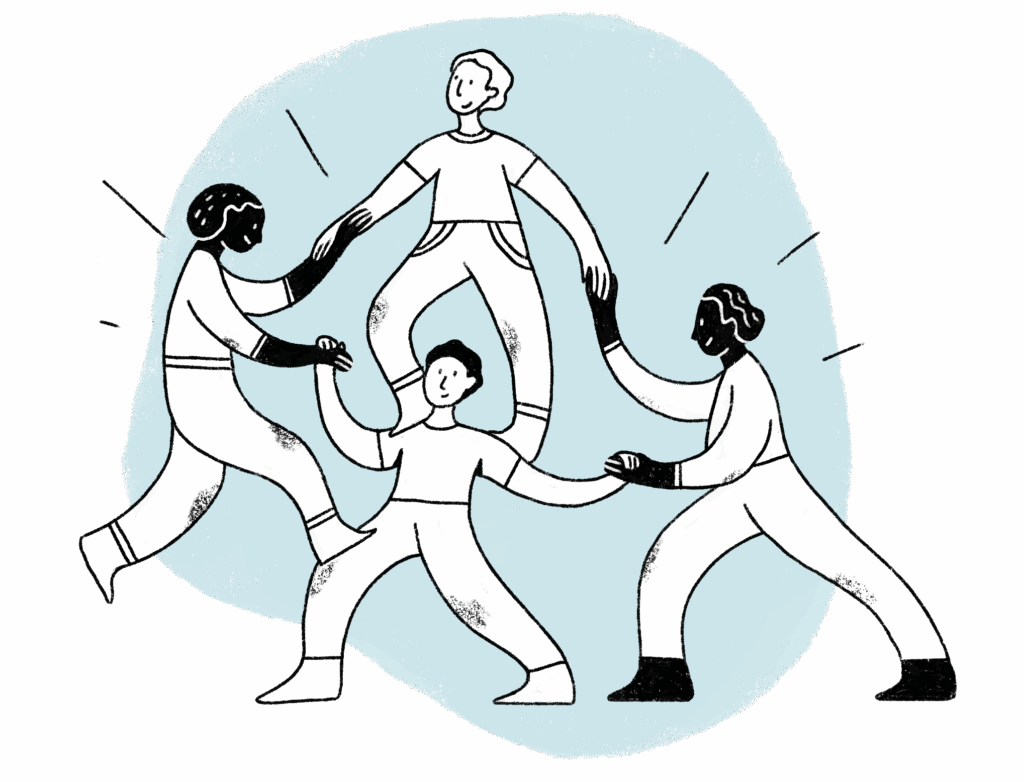
15 December 2025
6 min.
Competence
15 June 2025
8 min.

“I’m just not the right fit for this role.”
“Better not say anything—don’t want to rock the boat.”
“If I ask for help, I’ll come off as incompetent.”
Sound familiar? These are classic examples of limiting beliefs—those ingrained thoughts we carry, sometimes without realizing, that quietly hold us back at work.
The catch? They’re usually not based on facts. But they still shape how we act, more than we think.
Here are five common limiting beliefs in the workplace—plus ways to spot them, challenge them, and build a more open, confident mindset.
It’s a personal belief—often subconscious—that colours how we see ourselves, others, or our work environment.
Think of it like a mental filter: it affects how we decide, act, and interpret what’s happening around us—often without us noticing.
“I need to have all the answers to be taken seriously.”
“Great managers are born, not made.”
“It’s not my job to bring new ideas.”
These thoughts usually stem from past experiences or repeated messages—whether from colleagues, work culture, or what we’ve been taught.
The issue is when we stop questioning them. That’s when they start boxing us in, limiting our growth, and fuelling self-doubt.
Psychologist Carol Dweck from Stanford University has shown this in her research: what we believe about our own abilities directly impacts how we learn, collaborate with others, and deal with challenges. (1)
If you believe your abilities are fixed (a “fixed mindset”), you’re more likely to avoid effort or feedback and feel stuck in ideas like “I’m not good at this” or “I’ll never get there.”
But if you believe you can grow (a “growth mindset”), you’re more likely to take on challenges, learn from setbacks, and build new strengths.
Reinforce team cohesion, motivation, and performance by fostering a learning culture

This shows up a lot with managers, consultants, or anyone with responsibilities. The idea? To earn respect, you need to know everything, never hesitate, never say “I don’t know.”
It creates unnecessary pressure to be flawless. You might avoid situations that feel risky or hide your doubts instead of opening up with your team.
It also pushes the idea that being capable means being certain. But in reality, it’s often your ability to learn, listen, and tap into your team’s collective intelligence that makes the difference.
Not having all the answers doesn’t make you less credible—it shows humility and maturity.
Saying “I don’t know, but I’ll find out” can actually boost trust. It shows you’re serious without pretending to be a know-it-all.
✓ Ask instead of assuming you need to know it all.
✓ Say “What do you think?” or “Let’s figure it out together.”
✓ Keep in mind: people who can lead through uncertainty often move things forward the most.
Move from colleague to manager with confidence: develop strong leadership, build trust and make your transition a success

You notice some tension, something that doesn’t sit right… but since no one else is talking about it, you figure it’s not your place. So you hold back, go along, and maybe even bottle it up.
This belief keeps issues under the surface. It leads to unspoken tensions, resignation, and the sense that “that’s just how things work here.” But silence doesn’t mean everything’s fine—and waiting for someone else to speak up can let discomfort fester.
Bringing up an issue doesn’t mean blaming or making drama. It’s about opening a space for useful, transparent communication that fosters better collaboration.
What you’re feeling matters—even if no one’s said it out loud yet. You might not be the only one who noticed—just the first to voice it.
✓ Use open, factual language: “I’ve noticed…” or “Is it just me, or…?”
✓ Focus on your intention: to improve teamwork, clear things up, or prevent things from quietly getting worse.
✓ Invite others to share their views—different perspectives help build shared solutions.
Learn how to handle difficult conversations for constructive results!

You spot a small change that could help, or you’ve got a fresh idea—but you stop yourself: “That’s not my responsibility.” So the idea goes nowhere. Or someone picks it up way later.
This mindset keeps you in wait mode. It’s based on old-school role divisions: managers lead, employees follow. But in today’s work environments—fast, complex, always evolving—being proactive is a powerful soft skill at every level.
You don’t need to be “the boss” to make a difference.
Trying something simple, even on a small scale, can kick-start real change and inspire others.
✓ Turn frustration into action: “What could we try to improve this?”
✓ Find teammates to bounce the idea off or test it with.
✓ Don’t aim for perfection—one small step is often enough to start.

A lot of (future) managers carry this belief: you’re either naturally good with people or not cut out for leadership. So they shy away from certain tasks—or feel guilty when exchanges are difficult or when things don’t go smoothly.
It turns people management into a kind of talent you either have or don’t. It overlooks all the things you can learn and grow into. And it can make you feel like a fraud or alone—especially when dealing with conflict, emotions, or team challenges.
Building trust, listening well, adapting how you communicate—these are all skills you can learn.
Leadership isn’t about having a “perfect personality.” It’s about developing useful habits and approaches over time.
✓ Create regular check-ins, even short ones, to get a sense of the team’s vibe.
✓ Learn the basics of active listening, recognition, and feedback—they’re powerful trust-builders.
✓ Allow yourself to be human: what matters is staying real and learning as you go.
Create a climate of equity and inclusion strengthen engagement, boost performance and make your team shine

This shows up a lot—especially in people who are thoughtful, helpful, or new in a role. It starts with good intentions: not wanting to add to others’ mental load. But it can lead to feeling isolated.
You end up carrying things alone, missing out on support or fresh ideas. You might be stuck on something that could be solved in a quick chat. It can lead to overload or burnout—and the frustration of spinning your wheels.
Reaching out isn’t a bother—it’s how good teams work.
Sharing a roadblock or asking for help is a chance to build connection—and invite someone to contribute.
In healthy teams, asking for help isn’t a weakness—it’s just how things get done.
✓ Make the ask specific and time-bound: “Do you have 10 minutes to help me think through this?”
✓ Create habits like peer check-ins or quick sparring partner chats to avoid working in silos.
✓ Encourage a coaching mindset: where anyone can ask for help, offer support, or seek feedback—no judgment.
Strengthen team synergy: collaborate better, foster engagement, unleash creativity, and avoid silos

Letting go of a limiting belief doesn’t happen overnight. It’s a process—of noticing it, getting curious, asking different questions… and sometimes, having one of those “aha” moments that helps you shift.
Start with just one belief. The one that nags at you. The one that holds you back. The one that drains your energy.
Notice it. Give yourself permission to challenge it.
And when you’re ready to go further—from thinking to doing—we’ve got some tools to help make those mindset shifts stick.
✔ Le Lab: Our online learning platform designed to spark curiosity and support growth at your own pace. Interactive training you can access anytime, anywhere.
✔ Interactive team training paths: Immersive, multi-week learning experiences combining workshops and hands-on application.
✔ Training boosts: A dynamic group workshop that helps anchor new communication habits in just 30 days.
✔ Ready-to-train kit: Friendly, practical, field-tested content ready to drop straight into your LMS.
Not sure which soft skills training fits your needs best? Take our quiz to find the right solution for you!
1. Dweck, C. (2016). What having a “growth mindset” actually means. Harvard Business Review.
Blog

15 December 2025
6 min.

17 November 2025
8 min.

25 September 2025
5 min.